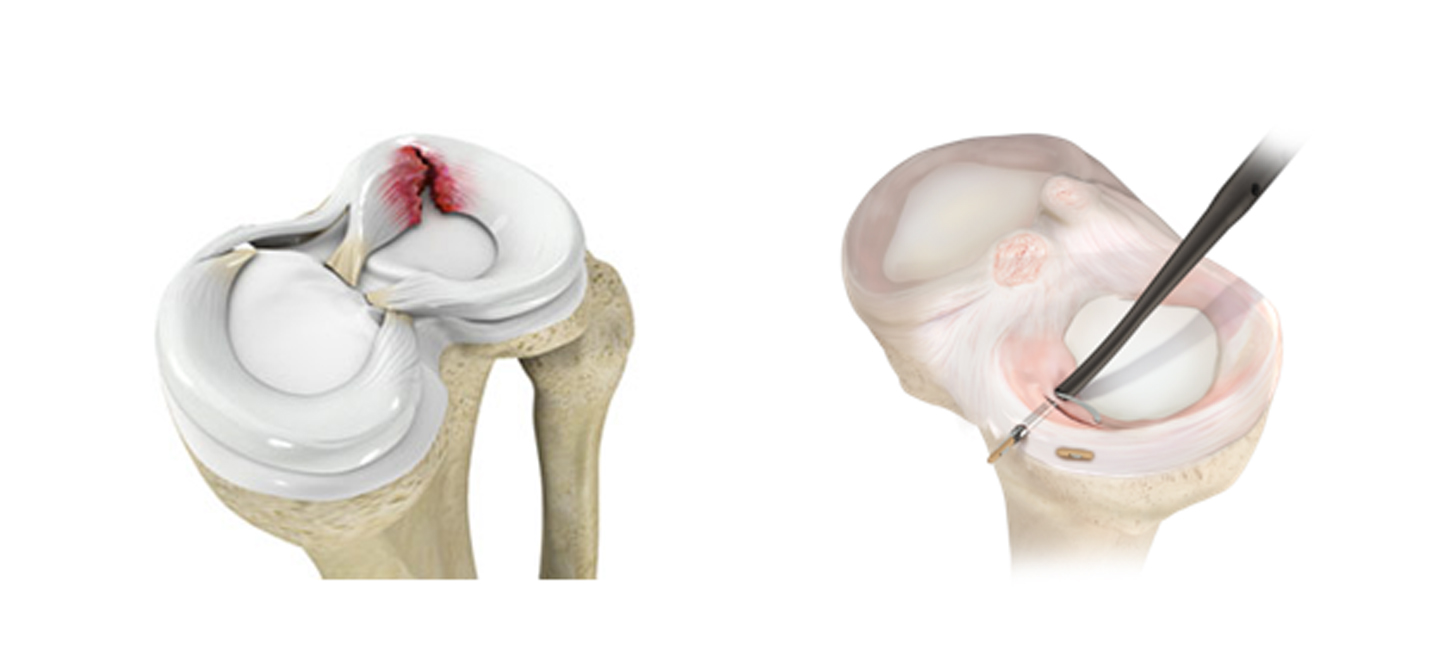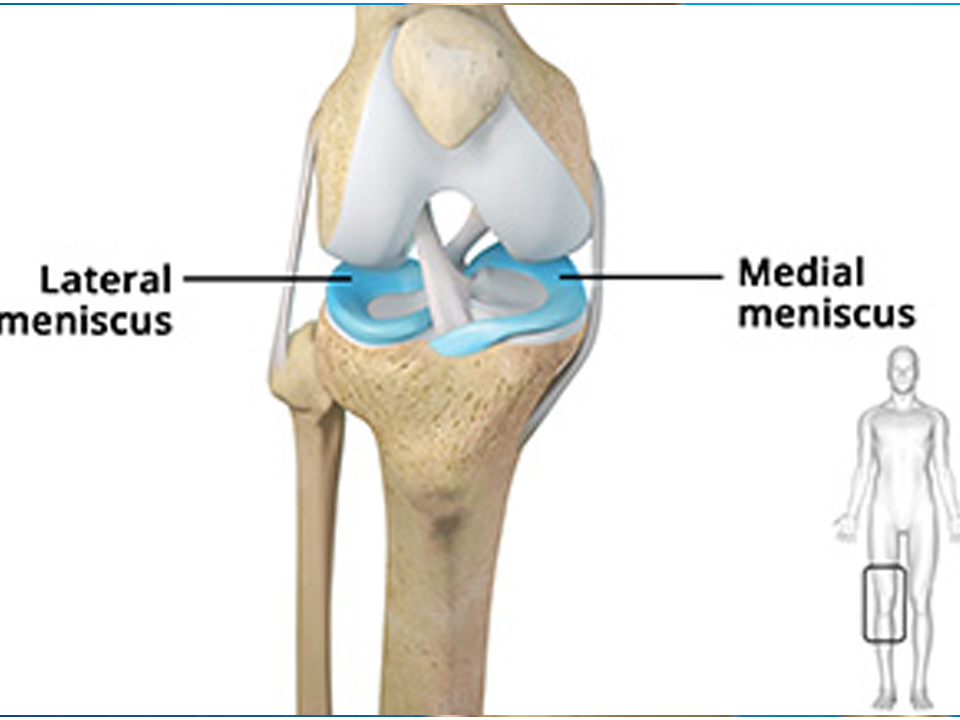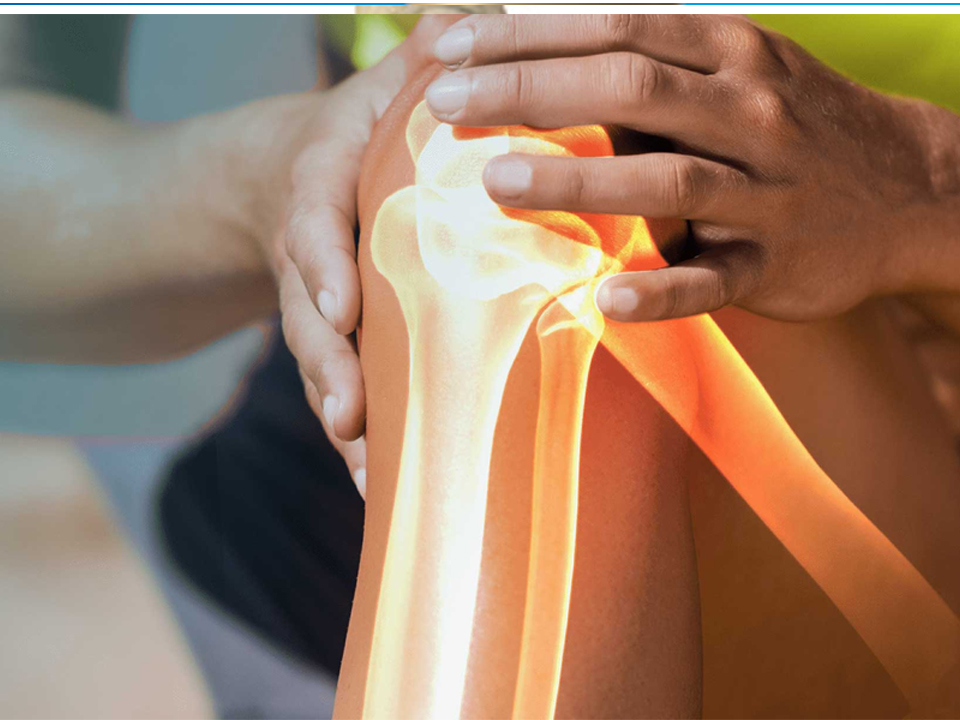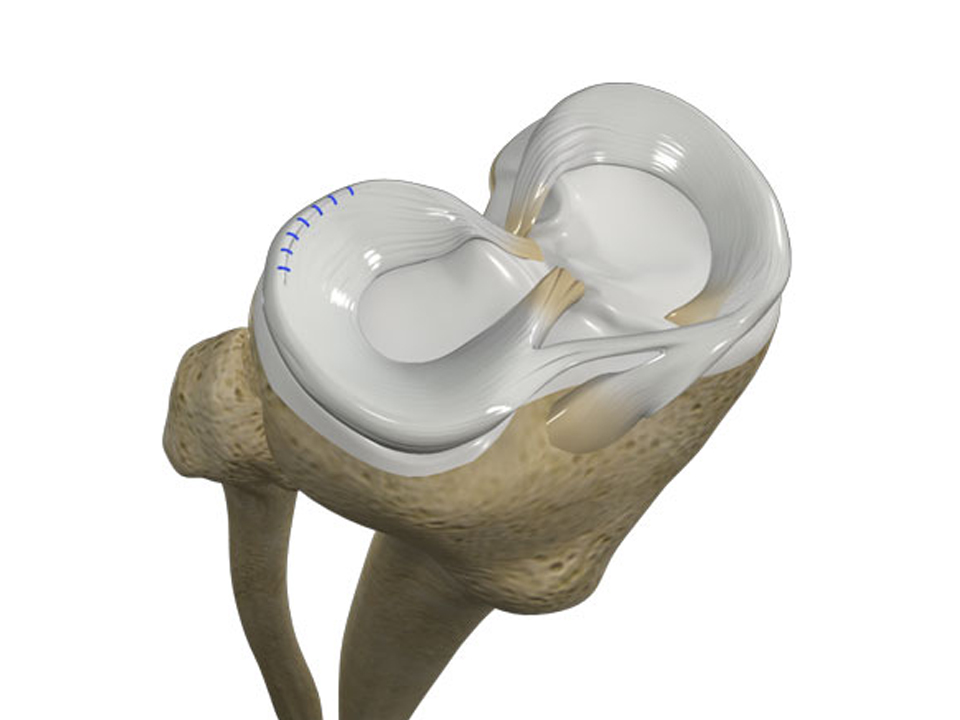Arthroscopic Meniscus Repair

- What is Meniscus?
The meniscus is a C shaped thick cartilage pads that acts as a shock absorber between the femur (thigh bone) and tibia (shin bone). Each knee has two separate menisci: the medial (inner aspect of the knee) and lateral (outer aspect of the knee). The menisci helps in withstanding the pressures of a walking, running, sitting, and standing.
- What are the causes?
In young people meniscus tears happen after sudden twisting injuries in the knee during sports activity, road traffic accidents and slip with rotational injuries at home. Older people are more likely to have degenerative meniscus tears due to thin cartilage.
- What are the symptoms?
You might feel a “pop” sound at the time of injury. Most people can still walk on their injured knees. Over time swelling may increase and difficulty in walking. The common symptoms are a pain in the knee, stiffness, swelling, catching or locking of your knee and the sensation of “giving way”. Without treatment, a piece of a torn meniscus may come loose and drift into the joint and can cause a slip, pop, or lock in the knee joint.
- How it’s treated?
If the meniscus tear is small and on the outer edge of the meniscus, you may not require surgical repair. As long as your symptoms do not persist and your knee is stable, you don’t require a surgical procedure. You will be given medications to reduce pain and swelling.
You can follow RICE protocol.
The RICE protocol is effective for most sports-related injuries. RICE stands for Rest, Ice, Compression, and Elevation.
- Rest: Rest and Restricted knee bending
- Ice: Ice pack over the knee for 20 minutes 2to 3 times per day.
- Compression: Compression bandage using Crepe from mid-leg to mid-thigh prevents swelling and bleeding into the knee joint.
- Elevation: Elevate your leg higher than your heart by keeping a pillow below the leg.
- How it’s repaired?
Usually done under spinal anesthesia. Surgeon makes two small key holes in front of the knee to insert an arthroscope into the joint. At first complete visualization of the knee joint done. The entire surgery performed through a minimally-invasive arthroscopic procedure and all-inside technique.
Partial meniscectomy: If the meniscus tear is at the inner margin, the torn portion is trimmed away.
Meniscus repair: If meniscus tear is big it’s repaired using various types of anchors.
All bucket handle meniscus tears require surgery.
For Best Advice and Consultation reach out to Orthopedic Doctor in Hanamkonda



